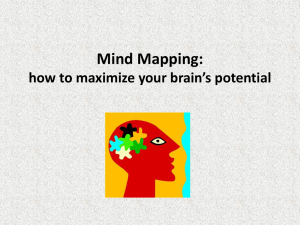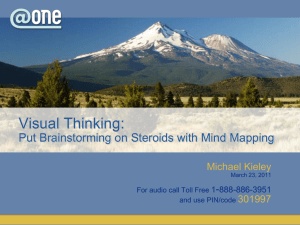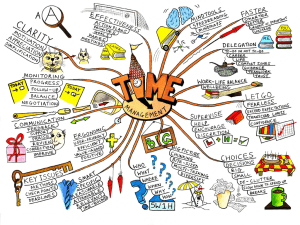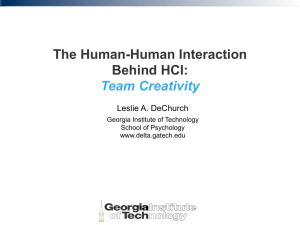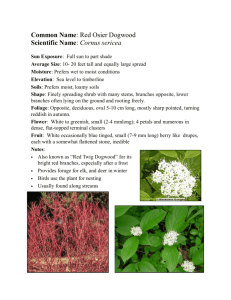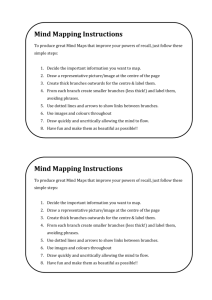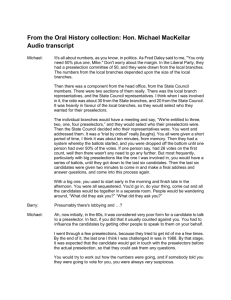Evolution unit concept mpa
advertisement
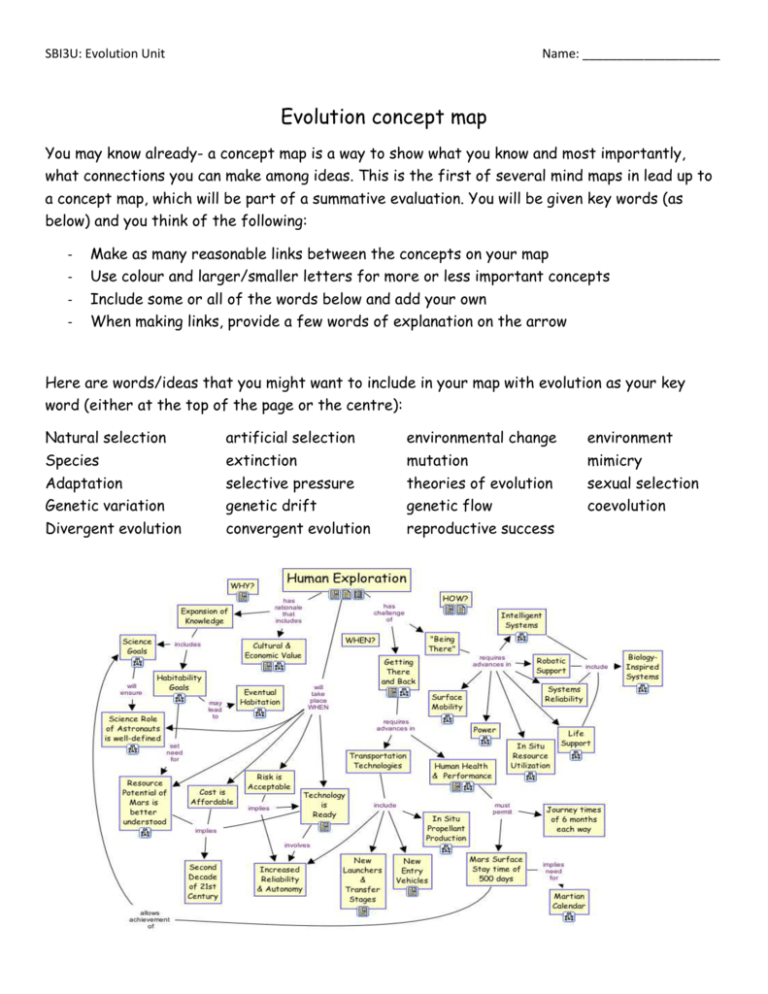
SBI3U: Evolution Unit Name: ____________________ Evolution concept map You may know already- a concept map is a way to show what you know and most importantly, what connections you can make among ideas. This is the first of several mind maps in lead up to a concept map, which will be part of a summative evaluation. You will be given key words (as below) and you think of the following: - Make as many reasonable links between the concepts on your map - Use colour and larger/smaller letters for more or less important concepts Include some or all of the words below and add your own - When making links, provide a few words of explanation on the arrow Here are words/ideas that you might want to include in your map with evolution as your key word (either at the top of the page or the centre): Natural selection artificial selection environmental change environment Species Adaptation extinction selective pressure mutation theories of evolution mimicry sexual selection Genetic variation genetic drift genetic flow coevolution Divergent evolution convergent evolution reproductive success Concept Mapping "Concept-Mapping" is a tool for assisting and enhancing many of the types of thinking and learning that we are required to do at university. To do a Map, write the main idea in the centre of the page -- it may be a word, a phrase, or a couple of juxtaposed ideas, for example -- then place related ideas on branches that radiate from this central idea. How to do a Map Print in capitals, for ease of reading. This will also encourage you to keep the points brief. Use unlined paper, since the presence of lines on paper may hinder the non-linear process of Mapping. If you must use lined paper, turn it so the lines are vertical. Use paper with no previous writing on it. Connect all words or phrases or lists with lines, to the centre or to other "branches." When you get a new idea, start again with a new "spoke" from the centre. Go quickly, without pausing -- try to keep up with the flow of ideas. Do not stop to decide where something should go. i.e. to order or organize material -- just get it down. Ordering and analyzing are "linear" activities and will disrupt the Mapping process. Write down everything you can think of without judging or editing -- these activities will also disrupt the Mapping process. If you come to a standstill, look over what you have done to see if you have left anything out. You may want to use color-coding, to group sections of the Map. Common Organizational Patterns Branches. An idea may branch many times to include both closely and distantly related ideas. Arrows. You may want to use arrows to join ideas from different branches. Groupings. If a number of branches contain related ideas, you may want to draw a circle around the whole area. Lists. Explanatory/Exploratory notes. Write a few sentences in the Map itself, to explain, question, or comment on some aspect of your Map -- for example, the relationship between some of the ideas. Advantages Of Mapping Mapping may be seen as a type of brainstorming. Both Mapping and brainstorming may be used to encourage the generation of new material, such as different interpretations and viewpoints: however, Mapping relies less on intentionally random input, whereas, during brainstorming, one may try to think up wild, zany, off-thewall ideas and connections. Brainstorming attempts to encourage highly divergent "lateral" thinking, whereas Mapping, by its structure, provides opportunity for convergent thinking, fitting ideas together, as well as thinking up new ideas, since it requires all ideas to be connected to the centre, and possibly to one another. Here are some advantages of Mapping, which will become more apparent to you after you have practiced this technique a few times: It clearly defines the central idea, by positioning it in the centre of the page. It allows you to indicate clearly the relative importance of each idea. It allows you to figure out the links among the key ideas more easily. It allows you to see all your basic information on one page. It allows you to add in new information without messy scratching out or squeezing in. It allows you to see complex relationships among ideas, such as self-perpetuating systems with feedback loops, rather than forcing you to fit non-linear relationships to linear formats, before you have finished thinking about them.
